Rhythmic Entrainment Explained

Surgeons and anesthesiologists are using music in the ICU more than ever before.
Rhythmic entrainment is a very well-documented scientific phenomenon that was discovered in 1665 by a Dutch physicist named Christian Huygens. Although Huygens original experiment was with metronomes, the principles that he discovered also have applications to the human body undergoing surgery. What the concept states is that vibrating bodies in close proximity tend to synchronize and beat/pulsate in unison. Here is the definition found in Wikipedia:
Entrainment in the bio-musicological sense refers to the synchronization (e.g. foot tapping) of organisms to an external perceived rhythm such as human music and dance. Humans are the only species for which all individuals experience entrainment, although there are documented examples of entrained nonhuman individuals.
There are different kinds of entrainment, such as the entrainment of moods or feelings, but we’re talking about rhythmic entrainment. This occurs, when a steady rhythm or pulse, is present near a human body, in this case the patient. As a direct result of the slow, steady pulse of the music, the patient’s heartbeat and rhythm begin to calm down and then synchronize with the music.
It was further discovered that even when patients are sleeping, in a coma, or under general anesthesia, the body still responds to the pulse of a nearby, steady beat. For that reason, if the patient undergoing a surgical or dental) procedure rhythmic entrainment can be obtained with slow, steady, soothing music delivered to the brain, through (preferably) cordless headphones. With headphones, the music goes directly to the brain through the eighth cranial nerve and the patient’s heartrate and breathing begin to slow down and stabilize. This is the power of rhythmic entrainment.

Doctors were anesthetized Women who are surgical patients
One of the many tasks of the anesthesiologist is to monitor the vital signs of the patient to make sure the heart rate, breathing, blood pressure, and body temperature are stable. If any of these vital signs can be stabilized simply by the patient listening to music that engages rhythmic entrainment, then that is the way to go.
Entrainment in general
Rhythmic entrainment is a type of entrainment, but entrainment happens in many different settings in life. There is social entrainment, for example; when you go to a football game or other sporting event, there are cheerleaders there to whip the crowd into a frenzy of enthusiasm for their team. Getting everyone to cheer together, to sing together, to chant together. This is entrainment and here, it’s the mood that is being entrained. Same with a rock concert, where a current pop music idol like Lady Gaga or Taylor Swift is performing. The crowd is entraining with the electric mood of the event.
Another very different example would be a church or religious service. After singing a congregational hymn or response, the attendees are feeling joined together and of a like mind. This is entrainment. When a chorus, a choir, an orchestra or a chamber ensemble experiences exact unity when performing a music work together, this is entrainment.
Not only do they entrain with each other, but they also entrain with the audience. This is one of the ways that you can tell if the performance went well. At the conclusion, the audience leaps to their feet and the performers are beaming with joy.
But until recently, the power of musical entrainment in a hospital or surgical setting has never really been explored or applied to the individual patient having surgery or other medical/dental procedures. Now when I speak to conferences and gatherings of medical personnel, they invariably say, “What a great idea! I’m surprised no one thought of this sooner!”
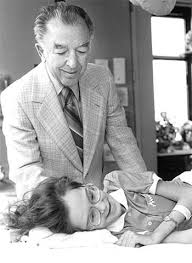
Dr Leatherman was one of the first physicians in Louisville to use music in the operating room.
When a physician or nurse enters a patient examining room, one of the first things they do is to listen to the heartbeat and the lungs. Heartbeat and breathing are both involuntary processes that should be slow and rhythmic in a healthy patient. When either of these is erratic, too shallow, or too fast, the patient is NOT in a state of good health but is in a state of dis-ease. Understanding body rhythms and their reflection of health is part of the physician’s job. Music can help with this.
To get music into YOUR hospital, please visit www.surgicalserenitysolutions.com/mp3players or www.surgicalserenitysolutions.com/hospitalheadphones
Understanding rhythmic entrainment will allow you to provide the best surgical experience for your patients!



 Insomnia seems to be a serious problem for lots of people these days. Although we do have a specific “Lullaby Playlist,” since these 5 therapeutic playlists were created for the surgical patient who is being put to sleep, any of them have a very soothing and soporific effect.
Insomnia seems to be a serious problem for lots of people these days. Although we do have a specific “Lullaby Playlist,” since these 5 therapeutic playlists were created for the surgical patient who is being put to sleep, any of them have a very soothing and soporific effect.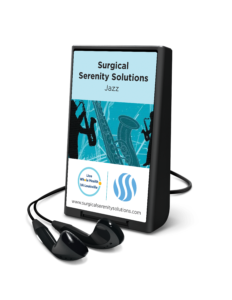 Veterans in the USA have had access to music therapy and music medicine since the late 1940’s after World War II ended. Thanks largely to the Veterans Hospitals, the modern-day field of music therapy was born.
Veterans in the USA have had access to music therapy and music medicine since the late 1940’s after World War II ended. Thanks largely to the Veterans Hospitals, the modern-day field of music therapy was born. The VA Hospital in Louisville, KY has just purchased 180 of our new MP3s and one of the playlists they are getting is the “Music for Memory Care” playlist. When I created this playlist, I included popular music from the 1900s, 1910’s, all the way through to the 1040s, when the Veterans were just returning from WWII. That generation loved “Tip-Toe Through the Tulips,” “By the Light of the Silvery Moon,” and “I’ll Be Loving You, Always.”
The VA Hospital in Louisville, KY has just purchased 180 of our new MP3s and one of the playlists they are getting is the “Music for Memory Care” playlist. When I created this playlist, I included popular music from the 1900s, 1910’s, all the way through to the 1040s, when the Veterans were just returning from WWII. That generation loved “Tip-Toe Through the Tulips,” “By the Light of the Silvery Moon,” and “I’ll Be Loving You, Always.”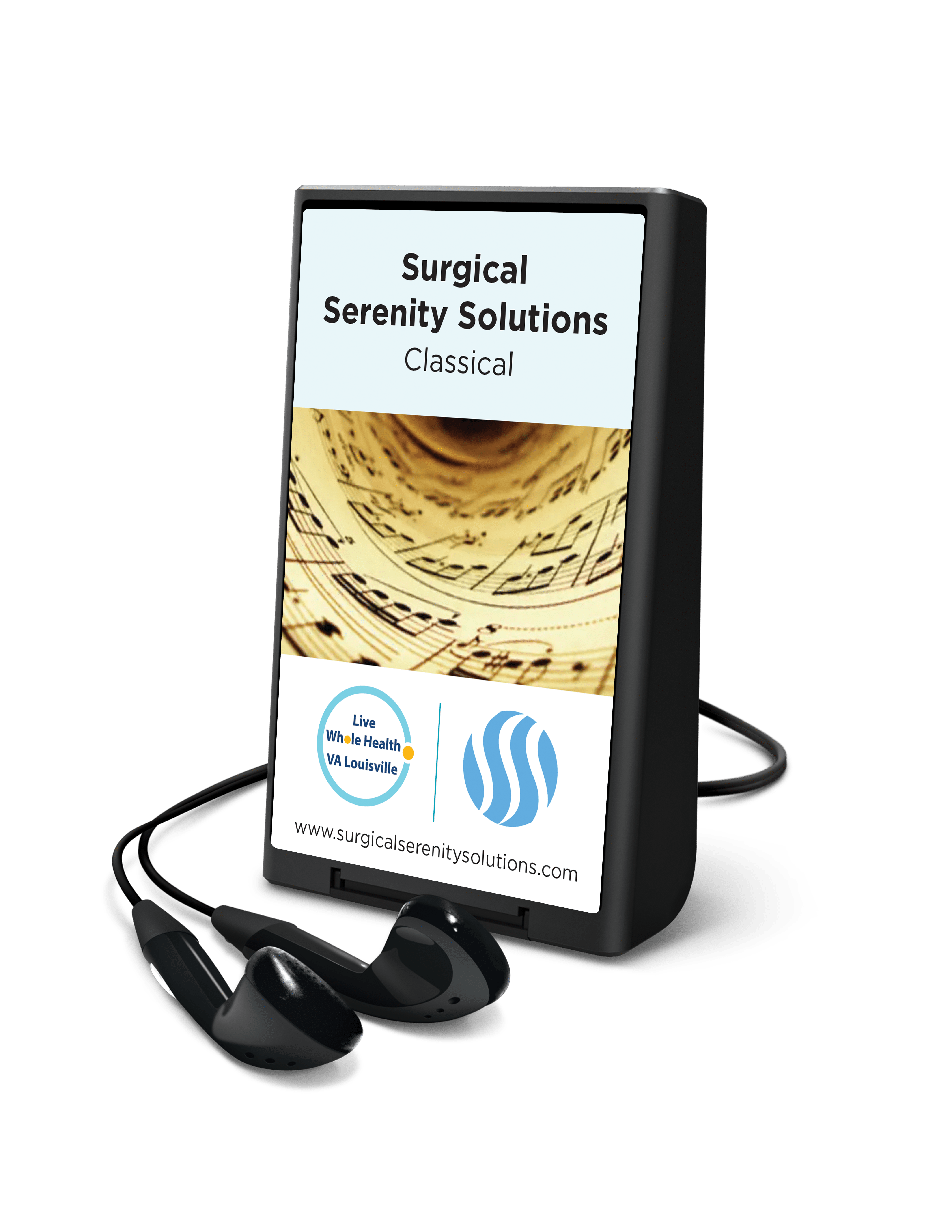 In 2015, the VA hospital in Louisville, KY, Robley Rex Medical Center, conducted a clinical research trial on our original pre-loaded, classical playlist headphones for surgery. This study was conducted on Veterans having major abdominal surgery. The researchers discovered a significant reduction in the opioid requirement for the Veterans listening through headphones to the classical playlist.
In 2015, the VA hospital in Louisville, KY, Robley Rex Medical Center, conducted a clinical research trial on our original pre-loaded, classical playlist headphones for surgery. This study was conducted on Veterans having major abdominal surgery. The researchers discovered a significant reduction in the opioid requirement for the Veterans listening through headphones to the classical playlist.
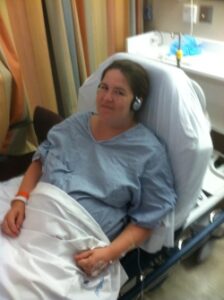 When hospitals see the research (
When hospitals see the research (

 Emergency departments need non-chemical ways to calm patients
Emergency departments need non-chemical ways to calm patients Although our headphones were created with the surgical patient in mind, customers/patients have now used them in dentistry, chemotherapy, childbirth, pain management, kidney dialysis, blood transfusions, blood draws, and in the back of an ambulance! At this point, I feel sure that there are many other uses as well. All the more reason to download these playlists onto your iPhone and have them ready to go!
Although our headphones were created with the surgical patient in mind, customers/patients have now used them in dentistry, chemotherapy, childbirth, pain management, kidney dialysis, blood transfusions, blood draws, and in the back of an ambulance! At this point, I feel sure that there are many other uses as well. All the more reason to download these playlists onto your iPhone and have them ready to go!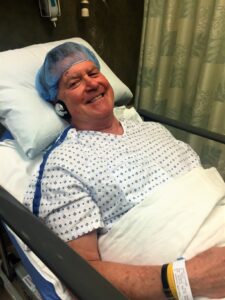 Have you noticed that when you go to the hospital for any reason, or even the doctors office nowadays, you’ll get a survey? Yes, medical professionals truly care that you have a positive experience at their hospital, surgery center, or private practice, but their reimbursement is also tied to positive patient ratings. Patients who have music headphones provided to them in the hospital tend to give higher patient satisfaction ratings. They know that their hospital is going above and beyond the call of duty to give them the best experience possible. And if they’ve had surgery in the past, they can definitely feel the difference between having a “sonic cocoon” created for them of beautiful, relaxing music and have a anxiety-filled pre-surgery period where nurses and techs are talking with patients all around you and you are separated from other patients only by a curtain.
Have you noticed that when you go to the hospital for any reason, or even the doctors office nowadays, you’ll get a survey? Yes, medical professionals truly care that you have a positive experience at their hospital, surgery center, or private practice, but their reimbursement is also tied to positive patient ratings. Patients who have music headphones provided to them in the hospital tend to give higher patient satisfaction ratings. They know that their hospital is going above and beyond the call of duty to give them the best experience possible. And if they’ve had surgery in the past, they can definitely feel the difference between having a “sonic cocoon” created for them of beautiful, relaxing music and have a anxiety-filled pre-surgery period where nurses and techs are talking with patients all around you and you are separated from other patients only by a curtain.